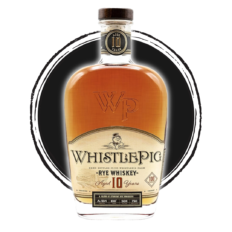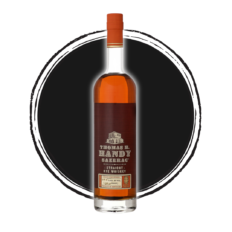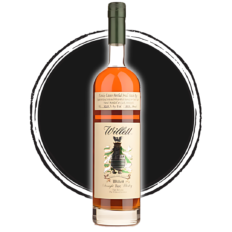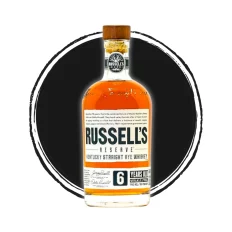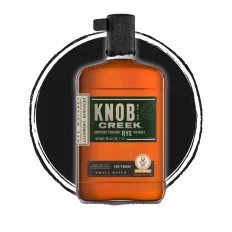More Articles
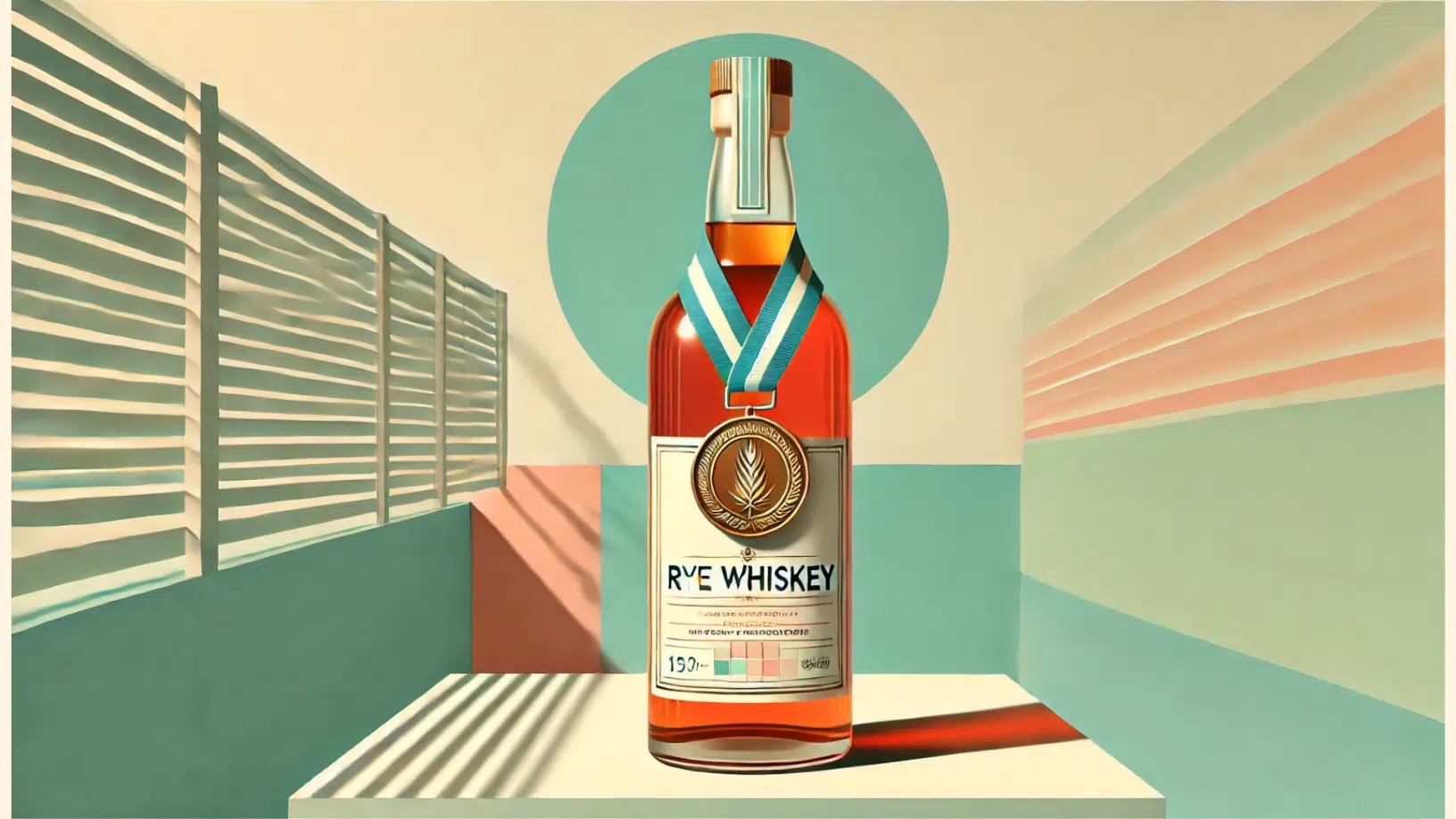
Best Rye Whiskey
Welcome to the spirited world of rye whiskey—a timeless classic that’s earning its rightful place in the spotlight once again.…
Welcome to the spirited world of rye whiskey—a timeless classic that’s earning its rightful place in the spotlight once again. This bold and distinctive spirit, renowned for its spicy kick and complex character, is captivating whiskey lovers around the globe. Whether you’re an experienced connoisseur or a curious newcomer, rye whiskey offers a rich sensory experience that’s steeped in history and brimming with potential for discovery.
Rye whiskey isn’t just another bottle on the shelf; it’s a journey through time and flavor. Its deep American roots stretch back to the early days of the colonies, when rye was the grain of choice for settlers crafting spirits in the Northeast. From humble beginnings, it rose to prominence, becoming a staple of classic cocktails like the Manhattan and Old Fashioned. Yet, like any great story, rye whiskey’s journey hasn’t been without twists and turns. Prohibition nearly erased it from existence, but thanks to the dedication of craft distillers and whiskey enthusiasts, rye has seen a triumphant revival.
Today, rye whiskey represents a perfect marriage of tradition and innovation. With its signature spice, bright fruit notes, and occasional sweet undertones, it caters to a wide range of palates. From small-batch producers redefining the craft to heritage brands preserving age-old recipes, the world of rye whiskey is as diverse as it is exciting.
In this guide, we’ll take you on a flavorful adventure through the top 10 rye whiskeys you simply must try. Along the way, we’ll explore what sets rye whiskey apart, how it’s made, and why it’s capturing the hearts of whiskey aficionados everywhere. Whether you’re sipping it neat, on the rocks, or in your favorite cocktail, rye whiskey has a story to tell—and we’re here to share it with you.
So, pour yourself a glass, let the aromas rise, and join us as we dive into the robust, spicy, and endlessly intriguing world of rye whiskey. Cheers to discovering your next favorite bottle!
What are rye whiskeys?
Rye whiskey is a type of distilled alcoholic beverage primarily made from fermented rye grain. It is known for its distinctive spicy and fruity flavor profile, distinguishing it from other whiskey types like bourbon, which mainly utilizes corn. The production process of rye whiskey involves fermentation, distillation, and aging in charred oak barrels, contributing significantly to its unique taste and aroma.
In the United States, the definition of rye whiskey is legally bound to contain at least 51% rye in its mash bill, ensuring the preservation of its characteristic flavor. Moreover, to be labeled as straight rye whiskey, it must be aged in new, charred oak barrels for a minimum of two years, as per U.S. law.
These regulations are crucial in maintaining the quality and authenticity of rye whiskey. The resurgence of rye whiskey’s popularity can be attributed to the growing interest in craft spirits and cocktail culture. Its robust flavor has made it a favorite for bartenders and enthusiasts in crafting classic cocktails such as the Manhattan, the Old Fashioned, and the Sazerac.
This renewed interest has spurred an increase in the number of distilleries producing rye whiskey, thereby expanding its variety and availability in the market. Overall, rye whiskey is celebrated for its rich history, complex flavor profile, and versatility in mixology, making it a cherished spirit among both connoisseurs and casual drinkers. To illustrate the diversity within rye whiskeys and how they compare to bourbon and Scotch, consider the following examples:
- Rye Whiskey Examples:
- Bulleit Rye: Known for its high rye content, Bulleit Rye offers a bold, spicy flavor with undertones of vanilla and oak.
- Sazerac Rye: This whiskey provides a slightly sweeter profile, with notes of citrus and honey alongside its spicy rye kick.
- Compared to Bourbon:
- Bourbon, such as Maker’s Mark, typically exhibits a sweeter, fuller profile due to its higher corn content, offering flavors of caramel, vanilla, and toffee.
- Compared to Scotch:
- Scotch, like Glenfiddich 12 Year, is known for its smoky and peaty characteristics, with flavors ranging from sweet malt to rich fruit, depending on the region and production methods.
Why are rye whiskeys popular?
Rye whiskeys have carved out a significant niche in the spirits world, primarily due to their unique spicy and fruity flavor. This distinct taste sets them apart from other whiskey types, making them a favored choice for those who appreciate a more robust flavor profile. The deep American heritage associated with rye whiskey also adds to its allure, connecting enthusiasts to a rich tradition of spirit production.
The popularity of rye whiskey is further bolstered by the resurgence of craft spirits and an expanding cocktail culture. Its bold flavor profile makes it an ideal base for classic cocktails such as the Manhattan and the Sazerac, appealing to both bartenders and aficionados. The versatility of rye whiskey, suitable for sipping neat, on the rocks, or as part of a mixed drink, enhances its appeal.
In essence, the combination of unique flavor, historical significance, and mixological versatility positions rye whiskey as a cherished spirit within the whiskey niche, satisfying a broad spectrum of palates and preferences.
Unique spicy and fruity flavor
Rye whiskey distinguishes itself with its bold, spicy, and fruity flavor profile, a direct result of the high rye content in its mash bill. This unique combination of flavors sets it apart from other whiskey varieties, offering a complex taste experience. The spiciness, often balanced with a hint of sweetness, makes rye whiskey exceptionally versatile, ideal for both sipping neat and crafting intricate cocktails.
For example, the spiciness of rye whiskey makes it the perfect base for a Manhattan, where its robust flavor complements the sweetness of the vermouth, while a Sazerac showcases its complexity alongside absinthe and a sugar cube. As for food pairings, rye whiskey’s boldness pairs well with the richness of grilled steak or the sweetness of dark chocolate, offering a delightful contrast. Its distinct flavor profile meets the palate preferences of those seeking depth and complexity in their spirits, driving its popularity among discerning whiskey enthusiasts.
Deep American heritage
Rye whiskey is deeply entwined with American history, originating with the early settlers and flourishing in regions such as Pennsylvania and Maryland. This storied past imbues rye whiskey with a sense of authenticity and tradition, resonating with consumers who appreciate spirits with historical significance. Figures like George Washington, who operated one of the largest rye whiskey distilleries in early America, highlight the spirit’s foundational role in American history.
The Whiskey Rebellion of the 1790s further cements rye’s place in the narrative of American independence, showcasing the spirit’s impact on economic and political realms. As rye whiskey experiences a renaissance, it reconnects drinkers with traditional American distilling craftsmanship, enhancing its appeal in the contemporary spirits landscape. The revival of rye whiskey not only celebrates its rich heritage but also underscores a broader appreciation for historically significant, craft spirits.
How is rye whiskey made?
The production of rye whiskey is a meticulous process rooted in both tradition and craftsmanship, beginning with the creation of the mash bill—a carefully measured blend of grains that must contain at least 51% rye. This majority rye content is what gives the whiskey its unmistakable spicy kick, along with vibrant notes of fruit and earthiness that set it apart from other whiskey varieties. The remaining portion of the mash bill typically includes corn and malted barley, which contribute sweetness and balance to the final flavor profile.
Once the mash is prepared, it undergoes fermentation. During this stage, yeast is added to the grain mixture, converting the sugars into alcohol and creating a rich, aromatic base. This is where rye whiskey starts to develop its foundational flavors, with hints of spice, grain, and fruit beginning to emerge.
The fermented mash is then distilled, often in copper stills, which serve to purify the liquid and concentrate its alcohol content while preserving the complex flavors derived from the grains. Distillation is both a science and an art, as distillers carefully control the process to ensure the whiskey retains its bold, spicy essence.
After distillation, the clear spirit—commonly referred to as “white dog”—is transferred to new, charred oak barrels for aging. This step is essential, as the charred interior of the barrels interacts with the spirit, infusing it with rich flavors like vanilla, caramel, and toasted oak. Over time, the whiskey also absorbs tannins and other compounds from the wood, which deepen its complexity and lend it the rich amber color rye whiskey is known for. For the whiskey to earn the designation of “straight rye,” it must age for at least two years, although many distillers choose to let their product mature for much longer to develop greater depth and sophistication.
The aging process is profoundly influenced by environmental factors such as temperature and humidity, which cause the whiskey to expand into and contract out of the wood, drawing out a spectrum of flavors. During this time, rye whiskey takes on the nuanced characteristics that whiskey enthusiasts cherish: warm baking spices, dark fruits, citrus zest, and a lingering peppery finish. Longer aging often accentuates these qualities, introducing layers of toffee, leather, and even smoky undertones.
Each step in the production of rye whiskey is a testament to the dedication and expertise of the distiller. From selecting the grains to determining the optimal aging period, every choice contributes to the spirit’s distinct personality. The result is a whiskey celebrated for its bold, spicy character, its ability to shine in classic cocktails, and its unmatched appeal when sipped neat or over ice. It’s no wonder rye whiskey continues to captivate drinkers and inspire a new generation of whiskey lovers.
Distilled from at least 51% rye grain
The hallmark of rye whiskey lies in its mash bill, which is mandated to contain a minimum of 51% rye grain. This stipulation ensures the spirit’s signature spicy and fruity notes are pronounced, setting it apart from other whiskey varieties. The predominance of rye grain in the distillation process is essential for crafting a whiskey that resonates with enthusiasts seeking a drink with bold flavor and intricate depth.
The higher the rye content, the more pronounced these characteristics become, offering a spectrum of flavors from sharp and peppery to subtly sweet, depending on the specific mash bill used by the distiller.
Aged in charred new oak barrels
For rye whiskey to fully develop its rich flavor profile, it undergoes aging in new, charred oak barrels. This aging process is critical, as it introduces a spectrum of flavors—from vanilla and caramel to deep, woody undertones—that complement the rye’s natural spiciness. The charring of the barrels plays a crucial role in this transformation, as it allows the whiskey to penetrate the wood, extracting these complex flavors and colors.
The result is a whiskey that not only carries the spicy notes of the rye but is also layered with the richness and depth that only time and the charred oak can provide. Different levels of charring can influence the whiskey’s flavor profile, with heavier charring typically imparting more robust and smoky notes.
Factors when choosing rye whiskey
When exploring the diverse and exciting world of rye whiskey, understanding the key factors that influence its character and quality can make the journey all the more rewarding. Three critical considerations—age, proof, and mash bill—serve as essential guides in selecting a rye whiskey that aligns with your palate and desired experience. Each of these elements plays a pivotal role in shaping the spirit’s flavor, texture, and intensity, allowing you to tailor your choice to your preferences.
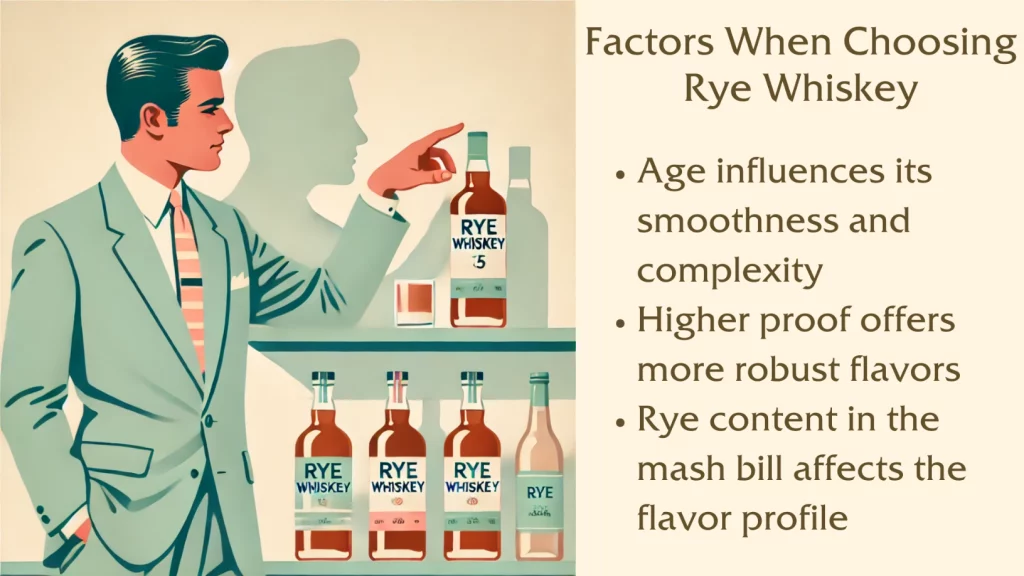
Age: Impact on smoothness and complexity
The age of a rye whiskey is one of its most defining characteristics, as it directly impacts both smoothness and flavor complexity. Aging allows the whiskey to mature in charred oak barrels, a process that transforms the raw distillate into a nuanced, well-rounded spirit.
- Younger Rye Whiskeys: Typically aged for 2–4 years, younger expressions often exhibit vibrant, bold flavors with a pronounced spiciness and grain-forward profile. These are ideal for cocktails, where their lively character can shine against mixers and other ingredients.
- Older Rye Whiskeys: With 6–10+ years of aging, older rye whiskeys develop a smoother texture and intricate layers of flavor. The extended barrel interaction imparts notes of vanilla, caramel, toasted oak, and even hints of leather or tobacco, creating a richer and more refined sipping experience.
While age is a reliable indicator of complexity, personal preference plays a significant role. Some enthusiasts enjoy the raw energy of younger rye, while others gravitate toward the depth and elegance of well-aged options.
Proof: Higher proof for more robust flavors
The proof of a rye whiskey, which reflects its alcohol content, profoundly influences its overall flavor intensity and drinking experience.
- Standard Proof (80–90): These whiskeys offer a balanced drinking experience with softer, more accessible flavors. They are ideal for those who prefer subtlety and enjoy sipping whiskey neat or over ice without being overwhelmed by alcohol heat.
- Higher Proof (100+ or Barrel Strength): High-proof or barrel-strength rye whiskeys deliver a robust and concentrated flavor experience. The elevated alcohol content acts as a solvent, extracting deeper flavors from both the grains and the barrel. These expressions are perfect for adventurous drinkers who enjoy bold, spicy, and full-bodied profiles. High-proof rye also offers versatility, as it can be diluted to taste without losing its intensity.
Understanding proof is particularly important when pairing rye whiskey with food or using it in cocktails, as higher proof options can stand up to strong flavors and mixers.
Mash bill: Rye content influences flavor profile
The mash bill—the unique grain recipe used in the whiskey-making process—lays the foundation for rye whiskey’s distinctive flavor profile.
- Higher Rye Content (70%–100%): Whiskeys with a dominant rye grain proportion are known for their unmistakable spiciness and vibrant complexity. Expect notes of black pepper, baking spices, citrus zest, and a dry finish. These are quintessential rye whiskeys, ideal for purists who appreciate the grain’s bold character.
- Lower Rye Content (~51%–70%): These whiskeys incorporate more corn or barley in the mash bill, leading to a softer, slightly sweeter flavor profile. The addition of corn brings forward notes of caramel and honey, while barley can contribute malty, nutty undertones. These options are great for those transitioning into rye from bourbon or for those who enjoy a balanced spice-sweet interplay.
The mash bill not only determines the whiskey’s flavor but also reflects the craftsmanship and creativity of the distiller. Some craft distillers experiment with unique grains, creating modern rye whiskeys with unexpected twists.
To help you assess these factors based on personal taste preferences or specific occasions for drinking rye whiskey, consider the following table:
| Factor | Description | Impact on Flavor | Considerations for Selection |
|---|---|---|---|
| Age | Time spent aging in barrels | Older = smoother, more complex | Choose older whiskeys for sipping neat on special occasions. Younger whiskeys may be more vibrant and suitable for cocktails. |
| Proof | Alcohol content by volume | Higher proof = more robust flavors | Higher proof whiskeys are great for experienced palates and cocktail enthusiasts. Lower proof may be more approachable for casual sipping. |
| Mash Bill | Percentage of rye in the grain mixture | Higher rye content = spicier flavor | For a bold, spicy profile, select a whiskey with a high rye content. For a smoother experience, consider a whiskey with a lower rye percentage and higher corn or barley content. |
Bringing It All Together: Choosing Your Perfect Rye Whiskey
When selecting a rye whiskey, consider how these factors align with your preferences and the occasion:
- Looking for a smooth, rich sipper? Opt for an older rye with a balanced proof and a well-rounded mash bill.
- Prefer bold, spicy flavors? Choose a high-proof rye with a mash bill that leans heavily on rye grain.
- Exploring rye whiskey for the first time? Start with a younger or lower-proof option that highlights its core characteristics without overwhelming your palate.
Understanding age, proof, and mash bill transforms the whiskey selection process from a guessing game into an intentional, enjoyable experience.
Top 10 Rye Whiskeys
The Top 10 Rye Whiskeys represent the pinnacle of craftsmanship and creativity in the world of spirits, capturing the bold, spicy essence that makes rye whiskey so cherished by enthusiasts and newcomers alike. These selections are more than just bottles—they are liquid expressions of tradition, innovation, and the mastery of distillation.
Each whiskey on this distinguished list has earned its place by showcasing the unique character of rye: the vibrant spice, the layered complexity, and the balance of boldness with subtlety. From small-batch artisanal distillers pushing the boundaries of flavor to heritage brands upholding time-honored methods, these rye whiskeys exemplify the dynamic and evolving landscape of the craft.
Whether you’re drawn to the peppery kick of a high-rye mash bill, the silky smoothness of long aging, or the robust intensity of barrel-strength offerings, these top-tier rye whiskeys promise an unforgettable experience in every sip. This curated collection not only highlights the diversity of the category but also underscores why rye whiskey continues to captivate hearts and palates around the world.
| Whiskey | Age | Proof | Tasting Notes | Awards/Accolades |
|---|---|---|---|---|
| WhistlePig 10 Year | 10 Years | 100 Proof | Rich, full-bodied, hints of caramel and oak | Winner of the 2019 San Francisco World Spirits Competition |
| Pikesville Straight Rye | 6 Years | 110 Proof | Smooth, spicy kick, with notes of cocoa and vanilla | Double Gold at the 2020 San Francisco World Spirits Competition |
| Sazerac Rye | N/A | 90 Proof | Classic rye spiciness with vanilla and caramel undertones | 2021 Ultimate Spirits Challenge 93 Points |
| Thomas H. Handy Sazerac | Varies | Barrel Proof (Varies) | Bold, uncut, with flavors of cinnamon, dark chocolate, and cloves | Named Best Rye Whiskey at the 2019 World Whiskies Awards |
| Willett Family Estate Small Batch Rye | Varies | Barrel Proof (Varies) | Complex, with notes of mint, honey, and citrus | Highly sought after, limited releases annually |
| Rittenhouse Bottled-in-Bond | 4 Years | 100 Proof | Spicy and sweet, with a balanced woody character | Gold Medal at the 2019 San Francisco World Spirits Competition |
| High West Rendezvous Rye | Varies | 92 Proof | A blend of old and young ryes, offering a mix of cinnamon, apple, and vanilla | 2020 Whisky Advocate Top 20 Whiskies |
| Russell’s Reserve 6 Year Old Rye | 6 Years | 90 Proof | Balanced, with a sweet finish and notes of herbs and almonds | Silver Medal at the 2020 San Francisco World Spirits Competition |
| Knob Creek Rye | Varies | 100 Proof | Strong and spicy, with undertones of honey and oak | Best Rye Whiskey at the 2016 International Wine & Spirit Competition |
| Old Forester Rye | N/A | 100 Proof | Affordable and versatile, with a spicy character balanced by sweet fruitiness | Excellent reviews and ratings for value and quality |
Each whiskey on this list offers a unique window into the versatility and richness of rye, from the rich and full-bodied WhistlePig 10 Year to the affordable and versatile Old Forester Rye. Whether you’re seeking a bottle for a special occasion, a gift, or simply to enjoy a quality drink at home, this guide aims to help you navigate the splendid world of rye whiskeys.
Best ways to enjoy rye whiskey
Rye whiskey offers a versatile drinking experience, and there are several best ways to enjoy rye whiskey to appreciate its unique flavor profile. Enjoying it neat is the most direct way to savor the spirit’s complex flavors and aromas, allowing the drinker to fully experience its richness and depth. For a gentler introduction, serving rye whiskey on the rocks can soften its boldness, as the ice slowly melts and dilutes the whiskey, subtly changing its character.

Rye whiskey also excels as the foundation of classic cocktails, where its spicy and fruity notes can elevate the drink, adding a layer of complexity to favorites like the Manhattan. Whether you prefer your whiskey straight, cooled, or mixed, rye whiskey adapts to each serving style, providing a delightful and satisfying experience.
Neat: To appreciate its full flavor
Enjoying rye whiskey neat is the premier choice for those seeking to appreciate its full flavor. This method allows enthusiasts to delve into the whiskey’s pure essence, uncovering the rich complexity, spicy undertones, and subtle sweetness that define rye whiskey. It’s the perfect approach for connoisseurs aiming to explore the spirit’s nuanced flavor profile in its most unadulterated form.
On the rocks: For a smoother experience
Opting for rye whiskey on the rocks offers a smoother experience. The ice cools the whiskey and gently dilutes it over time, softening the alcohol’s intensity and revealing a milder side of the spirit’s character. This serving style is excellent for those who prefer their whiskey with a bit less edge, allowing for a softer, more approachable drinking experience.
In cocktails: Perfect for classics like Manhattan
Incorporating rye whiskey in cocktails is ideal for crafting classic drinks like the Manhattan. Its inherent spicy and fruity notes bring an added layer of complexity to cocktails, perfectly complementing the sweetness of vermouth and the aromatic depth of bitters. Rye whiskey’s versatility in mixed drinks underscores its adaptability, making it a staple ingredient for mixologists and a delight for cocktail aficionados.
| Serving Style | Description | Tips | Example Cocktail |
|---|---|---|---|
| Neat | Direct appreciation of whiskey’s flavor | Use a tulip-shaped glass to concentrate aromas | – |
| On the Rocks | Whiskey served over ice | Use large ice cubes for slower dilution | – |
| Cocktails | Mixed with other ingredients | Balance the spicy notes of rye with sweet or bitter components | Manhattan: 2 oz Rye Whiskey, 1 oz Sweet Vermouth, 2 dashes Angostura Bitters, Cherry for garnish |
Where to buy top rye whiskeys
Finding a bottle of top-tier rye whiskey involves exploring local specialty liquor stores and online retailers. Specialty stores are particularly valuable for their expert advice and carefully curated selections, offering a personalized shopping experience for both newcomers and seasoned whiskey enthusiasts. These establishments often feature exclusive or limited-edition bottles, making them a go-to for those in search of something truly special.
To find reputable specialty liquor stores, consider searching for online reviews or asking for recommendations on social media whiskey enthusiast groups. When visiting, questions to ask include specifics about the rye whiskey’s age, distillery, and flavor profile, as well as any staff favorites or new arrivals. On the other hand, online retailers provide convenience and a wide variety, allowing whiskey lovers to browse a vast selection from the comfort of their own homes.
These platforms often feature user reviews and competitive pricing, aiding in the discovery of both popular and obscure rye whiskeys. Whether seeking a renowned classic or a hidden gem, these channels offer access to the finest rye whiskeys available, catering to diverse tastes and preferences. For navigating online retailers, look for shops with high customer ratings and reviews.
Sites that provide detailed product descriptions and transparent pricing are preferable. Reputable online retailers often include tasting notes and recommendations, which can be invaluable for making an informed decision.
How to store rye whiskey
Proper storage is key to preserving the integrity and flavor of rye whiskey. It’s essential to keep bottles away from direct sunlight, as UV rays can negatively affect the whiskey, leading to degradation of color and taste. Additionally, ensuring that your whiskey is stored at a stable temperature is crucial.
The ideal temperature range for storing whiskey is between 15°C and 20°C (59°F to 68°F). Storing whiskey outside of this range, especially in fluctuating conditions, can lead to deterioration in quality over time. Fluctuations in temperature, often found near appliances or in areas exposed to direct sunlight, can harm the whiskey’s quality.
Improper storage can lead to the whiskey’s flavors becoming muted or altered, and in extreme cases, the seal of the bottle may be compromised, leading to evaporation or contamination. By adhering to these storage principles, you can maintain the whiskey’s optimal condition, allowing its flavor profile and complexity to remain intact for both immediate enjoyment and future sipping.
Away from direct sunlight: To prevent degradation
Storing rye whiskey away from direct sunlight is imperative to prevent degradation. Sunlight’s UV rays can initiate chemical reactions within the whiskey, leading to alterations in both flavor and color. By choosing a storage location that is dark and cool, the integrity of the whiskey’s taste and aroma is preserved, protecting it from the harmful effects of sunlight exposure.
A cupboard or a storage area that does not receive direct sunlight is ideal for maintaining the quality of your whiskey.
At a stable temperature: To maintain quality
Keeping rye whiskey at a stable temperature is vital to maintain its quality. Fluctuations in temperature can cause the liquid and the air within the bottle to expand and contract, which may negatively impact the whiskey’s character. A consistent, cool environment not only preserves the whiskey in its prime condition but also ensures that its flavors develop as intended, free from the detrimental impacts of temperature variability.
Avoid storing whiskey in locations with significant temperature swings, such as near heating units, kitchens, or in direct sunlight.

